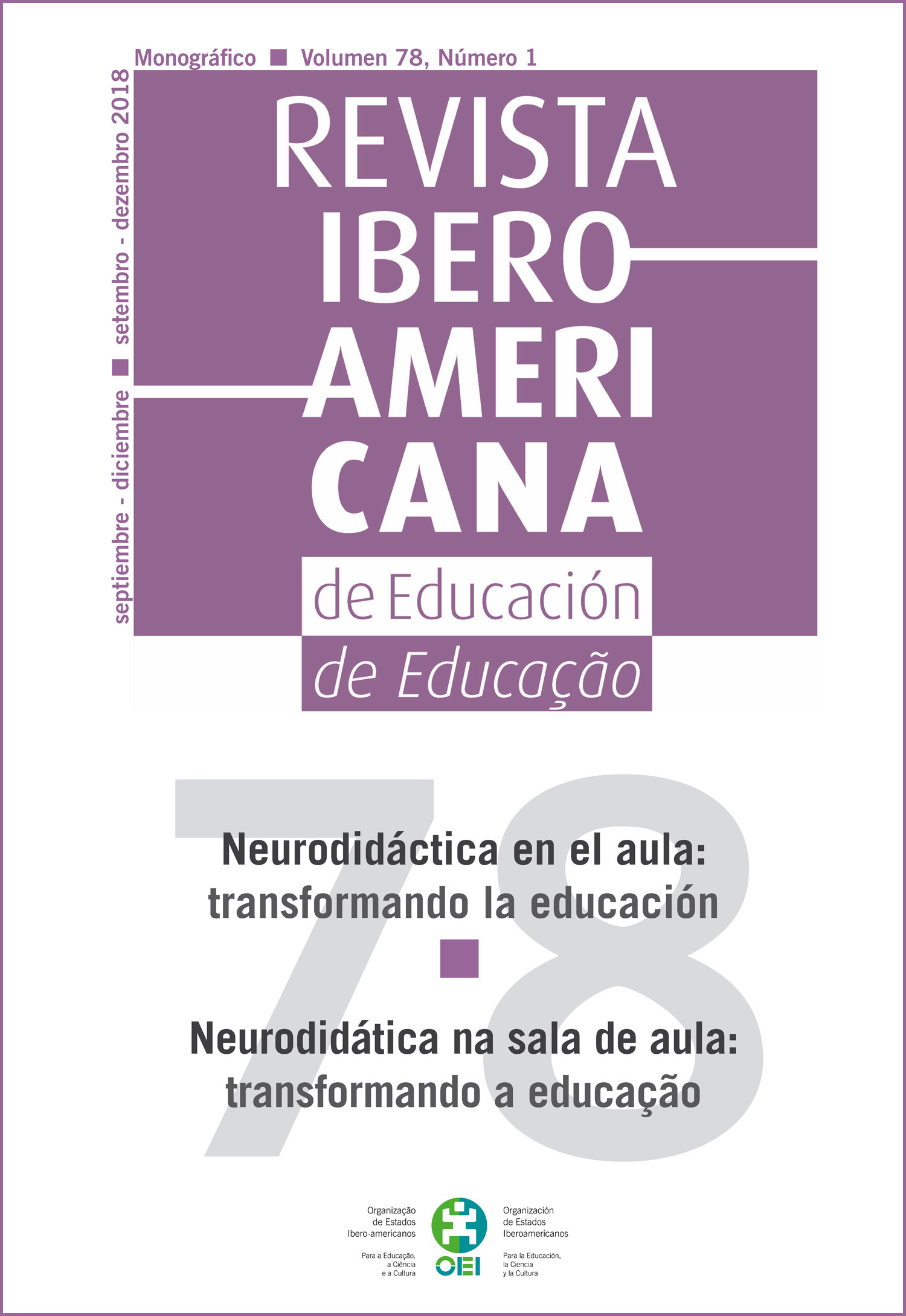Neurodydactic and self-regulation of learning, a path from theory to practice
DOI:
https://doi.org/10.35362/rie7813193Keywords:
Neurodidactics, Self-regulation of Learning, Secondary Level, Autonomous LearningAbstract
The self-regulation of learning aims to generate an autonomous process in the students; Based on this approach, we consider that the educational task should be directed to the formation of competences that allow learning to learn, thus achieving a constant and continuous learning throughout life in the different situations and areas in which it must develop and, fundamentally, enable spaces in which the student generates new ways of thinking and behavior. For all this, we began to investigate and look for alternatives and varied strategies to be able to modify the way in which each teacher brings knowledge to the students, focusing on the methodology and teaching strategies, looking for students to get involved in their own learning, Be responsible for it and be aware of the changes that occur in them. To address this situation, from the neurodidactics we create projects in different curricular spaces, where the teachers propitiated that the learning is centered on the student, considering it as the axis of the process, recognizing, accepting and respecting that it is he who realizes an active construction of knowledge with the guide of the teacher and his classmates. Throughout this paper we present the articulation from theory to practice through the different curricular spaces.
Downloads
References
Dignath, C.;Buettner, G. y Langfeldt, H. (2008) How can primary school students learn self-regulated learning strategies most effectively? A meta-analysis on self-regulation training programmes. Educational Research Review 3, 101–129.
Fernández, E., Bernardo, A., Suarez, N., Cerezo, R., Núñez, J.C., Rosario, P. (2013) Predicción del uso de estrategias de autorregulación en educación superior. Anales de psicología. 29 (3), 865-875.
Fuentes, S; Rosário, P. (2013) Aprendizaje Autónomo y Mediación Cognitiva: Mediar para la Autorregulación del Aprendizaje: Un desafío educativo para el siglo XXI. Instituto Internacional para el Desarrollo Cognitivo, Indesco. Facultad de Ciencias de la Educación. Universidad de Chile.
Lanz, M.Z. (2006) Aprendizaje autorregulado. Un estudio sobre estrategias de aprendizaje en escuela secundaria. (Tesis de maestría). Universidad Nacional del Comahue, Neuquén, Argentina.
Ley de Educación Nacional (2006). Nº 26280. Boletín Oficial de la República Argentina Nº 31.062, p.1, publicado el 28 de diciembre de 2006. Buenos Aires, Argentina.
Linares, G. (2016) Aprendizaje significativo y neurociencia: la conexión del siglo XXI. Revista Iberoamericana de Producción Académica y Gestión Educativa, 4.
Ministerio de Educación y Deportes. Presidencia de la Nación (2017). Informe estadístico del Sistema Educativo Nacional.
Núñez, J.; Solano, P.; González-Pienda, J.; Rosário, P. (2006) El aprendizaje autorregulado como medio y meta de la educación. Papeles del Psicólogo, 27(3), 139-146.
Paniagua, M. (2013) Neurodidáctica: una nueva forma de hacer educación. Fides et Ratio - Revista de Difusión cultural y científica de la Universidad La Salle en Bolivia, 6(6), 72-77. Recuperado de http://www.scielo.org.bo/scielo.php?script=sci_arttext&pid=S2071-081X2013000100009&lng=es&tlng=es.
Rosario, P., Lourenco, A., Paiva, M.O., Núñez, J.C., González-Pineda, J.A., Valle, A. (2012). Autoeficacia y utilidad percibida como condiciones necesarias para un aprendizaje académico autorregulado. Anales de psicología. 28 (1), 37-44.
Rosario, P., Pereira, A., Hogemann, J., Núñez, A. R., Figueiredo, M., Núñez, J. C., Fuentes, S., Gaeta, M.L. (2014). Autorregulación del aprendizaje: una revisión sistemática en revistas de la base SciELO. Universitas Psychologica, 13 (2), 781-798.
Sánchez, P. A., Valdés, A. A., Gantús, M. & Vales, J. (2011). Propiedades psicométricas de un instrumento para medir la disposición hacia el estudio. CPU-e, Revista de Investigación Educativa, 12. Recuperado de http://www.uv.mx/cpue/num12/inves/Sanchez-Cuervo-propiedades.htm
Rojas, H. (2008) Aprendizaje Autorregulado, motivación y rendimiento Académico. Liberabit, 14, 15-20,
Whitebread, D., Basilio, M. (2012) Emergencia y desarrollo temprano de la autorregulación en niños preescolares. Profesorado revista de currículum y formación del profesorado. 16(1), 15-34.
Zimmerman, B. (2001) Becoming a Self-Regulated Learner. Theory into Practice, 41(2), 64-70.
How to Cite
Downloads
Published
Issue
Section
License
Any authors who publish with this journal accept the following terms:















